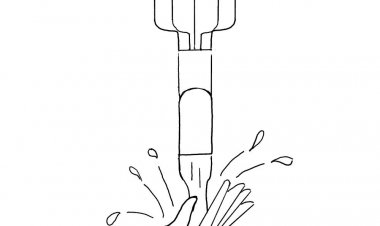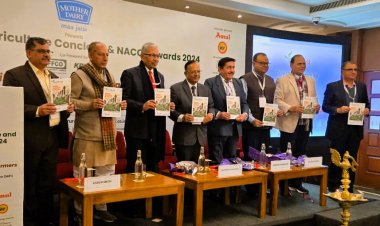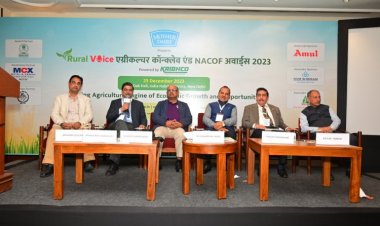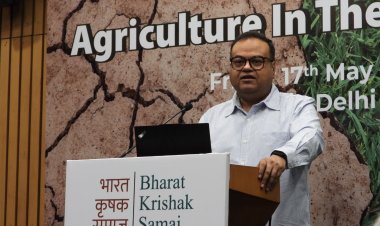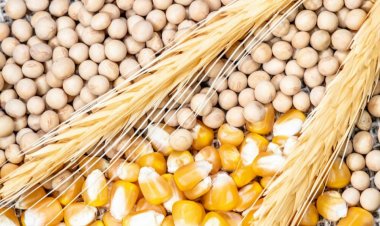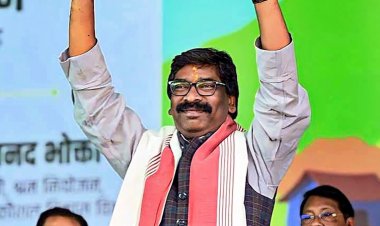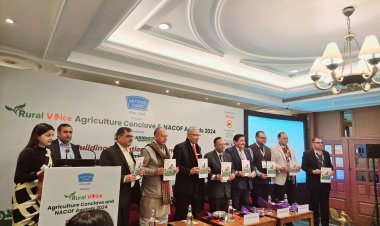GCMMF @ 50: Branding, Marketing and Supply Chain Efficiency made Amul India’s largest dairy company: Dr. R.S. Sodhi
The Gujarat Cooperative Milk Marketing Federation (GCMMF), the marketing arm of the country's largest dairy and FMCG brand Amul, which is owned by farmers, completed 50 years on July 9. It has been instrumental in taking the turnover of the Amul brand beyond $2 billion. The turnover of GCMMF in the financial year 2022-23 has been around Rs 55,000 crore. This is a great achievement not only for the cooperative movement, but for the country and the farmers.
The Gujarat Cooperative Milk Marketing Federation (GCMMF), the marketing arm of the country's largest dairy and FMCG brand Amul, which is owned by farmers, completed 50 years on July 9. It has been instrumental in taking the turnover of the Amul brand beyond $2 billion. The turnover of GCMMF in the financial year 2022-23 has been around Rs 55,000 crore. This is a great achievement not only for the cooperative movement, but for the country and the farmers. It is the first farmer-owned organization in the world which shares 80 per cent of the price paid by the consumer with the dairy farmers. In an exclusive interview Dr R.S. Sodhi, President, Indian Dairy Association and former Managing Director of GCMMF (Amul) shared with Harvir Singh, Editor-in-Chief Rural Voice the success story of GCMMF and the role of its founders and successive leadership which made GCMMF Amul a market leader and a global brand in dairy sector.
Excerpts from the interview:
Amul and GCMMF have reached here by turning the farmers' movement into a business organization, what is its strength?
First of all let me clarify that Gujarat Cooperative Milk Marketing Federation (GCMMF) is the marketing arm of Amul which is owned by the farmers. Dr. Verghese Kurien joined Amul in 1948 under the leadership of Tribhuvan Das Patel. Amul was formed in 1946. Distributors were made all over India for marketing the products of Amul brand, including Tata group's Voltas Limited. Dr. Kurien thought that the main work of this cooperative of farmers would be to collect milk from farmers, process it and sell it under the Amul brand. In the decade of 1960-70, when Khaira union was making progress, a cooperative union was formed in Mehsana district of Gujarat on the same model. It also collected milk, made products and launched products under its own brand Sagar. After that, district unions were also formed in Surat, Baroda, Himmatnagar and Banaskantha. If they all came up with their own brands, first of all they would be competing with each other and moreover, they didn't have the resources to market themselves. At that time, Tribhuvan Das Patel, Dr. Varghese Kurien, Moti Bhai Chaudhary, chairman of the Mehsana District Union, and the chairpersons of the rest of the dairy unions at that time, decided that a separate organization should be formed for marketing, which would be owned by the farmers, but it would work for marketing, brand building and sales and distribution.
GCMMF was registered on 9th July, 1972, but it took 6-7 months to become commercially operational. The best professionals were kept in GCMMF at that time. When I joined GCMMF in 1982, our main task was to take over the sales and distribution work done by Voltas and other agencies. Dr. Verghese Kurien brought in the best of professionals at that time, including JJ Bakshi who looked after Amul at Voltas Limited. They requested Voltas to give them to us, we will keep them with us for two-three years, then you will take over and send them back. JJ Bakshi brought with him his own team, IIM (Indian Institute of Management) graduates were hired and a complete marketing team was formed which did a full marketing takeover. It is the farmers’ cooperative Amul which has such a big marketing organization of its own, it has no competition. In India, there is only one such big organization marketing FMCG and food brands, which is owned by the farmers.
This means that Dr. Kurien understood this thing 50 years ago that what will be the future, how to move ahead and how we have to strengthen ourselves because at present the big companies of the world are marketing companies?
The logic behind it was that the company of farmers' products, which is procuring milk locally and processing it locally, needs better professionals and technocrats to market it nationally and internationally, because at that time the brand from which it had to compete with the number one food brand in the world. That's why Dr. Kurien hired qualified people. Be it in milk procurement, animal husbandry or milk processing. I remember when I joined Amul in November 1982, Voltas prepared a 2-year pre-plan for the takeover and told GCMMF that we will give you the takeover, you keep your man, we will train him. In today's time no company would do such a thing but Tata did it at that time. There was a division of Voltas called PCP (Pharma Consumer Product Division), I used to sit in its office permanently. At the time when I joined Amul, it was a well-known brand. Then there was a turnover of Rs 121 crore and 12 lakh liters of milk was purchased from farmers. Last year, the turnover of the Amul brand reached Rs 71,000 crore and today about 280 lakh liters of milk is procured. Even I had not thought at that time that Amul would become so big.
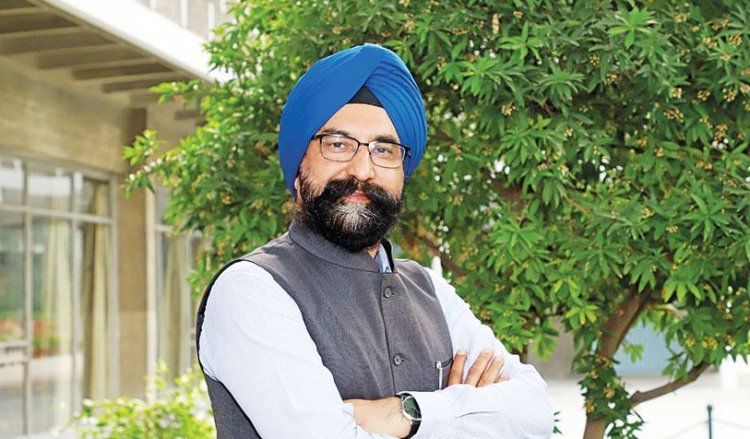
You have been in Amul and GCMMF for so long. What major changes have you seen in the dairy and cooperative sector, especially in GCMMF and Amul? How to survive while competing with the world's biggest brands?
If we look at the journey of Amul or GCMMF in the last 50 years, work was done on all three of its three-tier structure. First, Milk Procurement. If you have to sell milk products, then due to the increase in the population of India, the demand which is increasing has to be fulfilled. In 1972 there were 6 district unions and only some part of Gujarat was covered. Today there are 18 district unions and all 33 districts are covered. Membership of farmers was increased, geographical area was increased, not only in Gujarat but also outside Gujarat. From 2010, the federation started procuring milk outside Gujarat as well. If seen today, 20 percent of Amul's milk comes from 15-16 states outside Gujarat. The farmers there are also getting the benefit of Amul. Firstly, milk procurement was expanded. Second, to increase capacity for milk processing and bring in the world's most advanced technology. In 1950, Amul made milk powder from buffalo milk for the first time. After that, if we talk about the decade of 1990s, for the first time GCMMF also distributed the edible oil of Dhara. When multinational companies came to India in the 1990s, Amul launched ice cream in front of them. In the year 2000, we started selling Amul milk outside Gujarat also. Till then Amul milk was sold only in Gujarat. Today, 50 per cent of Amul's turnover comes from milk alone. After that, the line of value added products started. Be it beverages, cheese, ice cream, new varieties have come. Sold curd, sold lassi, apart from this, GCMMF started selling many types of food products in non-milk products, be it potato products, honey, bakery. The main credit for this goes to the three areas of milk procurement, milk processing and sales and distribution. When I joined Amul, we had only 5 distribution branches. Today we have 82-83 branches. Even if you go to Leh-Ladakh, Amul has an office there too. Whether you go to Jorhat in the north-east, Jodhpur in the west or Coimbatore in the south, anywhere in Kerala, you will find Amul distribution hubs everywhere.
Amul also brought some premium products very strongly. Perhaps you also had a challenge that how to compete with global brands and what kind of products to bring in front of them?
Amul is the only brand which is for the common man as well as for the premium. Amul has products for people of all ages, all income groups and all walks of life. Grandparents, parents, children are all in the house and Amul products are there for all of them. Whether it is milk, cheese, ice cream or other products, all consider Amul as their premium. No matter which part of India you go, this brand looks premium to all. Premium products are in the mind of the consumer. Products will have to be made, packaged and branded at the level that consumers expect from you. Amul is no less than any multinational company in terms of image.
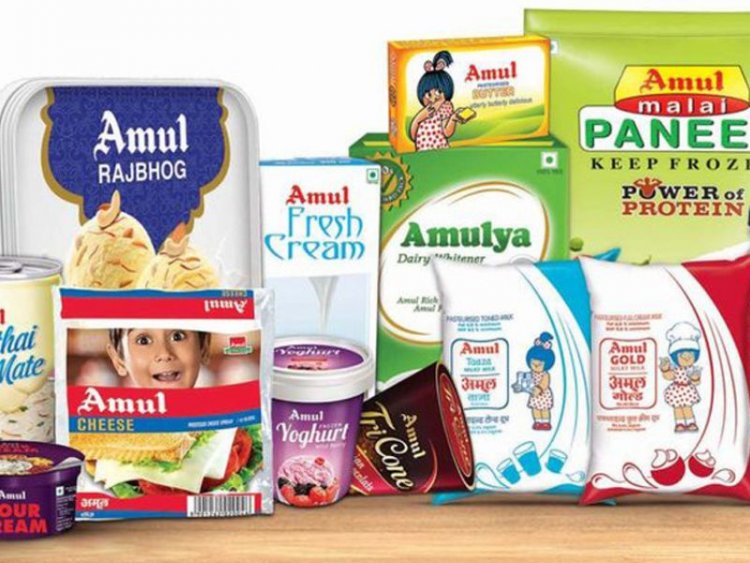
You are right that premium is in the mind of the consumer. Amul is not only competing with the big brands of the world but also appears to be competing. Amul's presence is visible in global sports events or other global events, what is the strategy behind this?
Let me tell you clearly that when a consumer buys Amul Butter, Amul Cheese or Amul Ice Cream, he does not think whether it is a PSU brand or a Cooperative brand. He only feels that this product is made for him. It is of good quality, tastes good, is made with modern technology and I am getting more than what I am paying for. If you are a brand of cooperative or PSU, it does not mean that you will not have to adopt modern technology like multinational or corporate. We are second to none in anything be it production process, availability, digital integration, brand building, packaging. Dr. Verghese Kurien used to say that you are an organization of farmers, so you have to focus on being at the top. Your products should be better than others.
We have made a lot of progress in milk production and dairy industry. In terms of value, the dairy industry has become bigger than food grains. Farmers are getting such huge benefits through this sector but it has always been a challenge before us that other states or cooperative organizations could not strengthen themselves in the way that Amul did successfully. What do you think is behind his performance not being that way?
You are right that the level at which Amul has reached, others could not reach that level. it is no problem. Today the cooperative sector buys about 6.5 crore liters of milk. Amul's share is only one third or about 40 per cent. 60 percent are others. Today Amul is number one in India but if you go to Karnataka, Nandini is number one there, Verka is number one in Punjab, Sudha is number one in Bihar. Amul is a 77-year-old organization. It is true that Amul got the advantage of coming first. Others may not have got the leadership and professionals that Amul got. Even now if you see, there are number 1, number 2, number 3 cooperative organizations in the dairy industry.
What do you see as the reason why the private dairy sector, even the multinational brands, have not been able to challenge the cooperatives in the same way? Most of the milk providers to the cooperatives are small farmers, so is it easier for the cooperatives to associate with them than others?
The contribution of the private sector is also huge in the level at which the dairy industry has reached today. Today, as much milk as the cooperative sector takes, or a little less than that, the private sector takes. The cooperative sector takes 50-55 percent of the milk while the private sector takes 45-50 percent. The share of private sector has increased continuously in the last two-three decades. If you see all over India, in some places cooperatives are doing well and private sector is competing with them, in some places private sector is doing well and cooperatives are competing with them. It is in the interest of the farmers and the consumers that both the cooperative and the private sector compete for the produce of the farmers in the same area. Both have to pay a good price to the farmers and keep a reasonable price for their products for the consumers. It is a healthy competition.
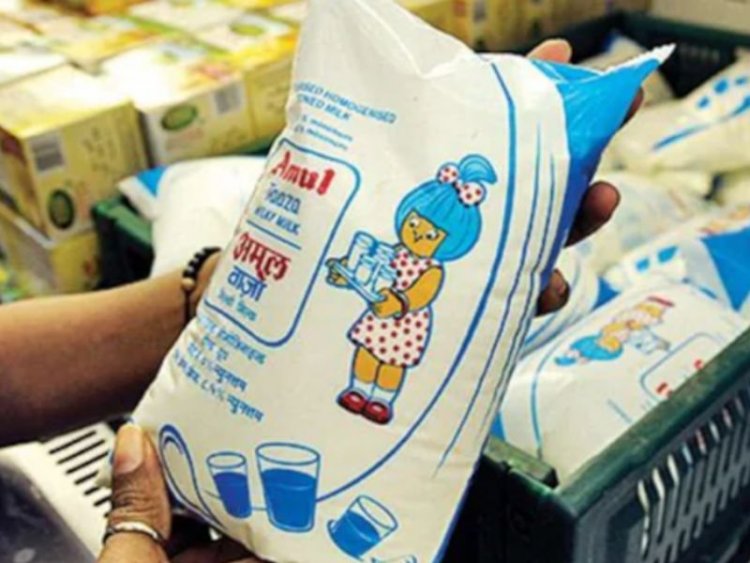
The growth of GCMMF under your leadership has been phenomenal. How do you see the future of the dairy sector in the country and what is going to be the role of India's dairy sector in the world?
The future of India in the world is the future of the dairy sector. Today if India's economy is a little more than 3 trillion dollars and we are saying that it will increase 3 times in the next 5 years, then the same will happen in the dairy sector. While the production of food grains has increased 3 times in 50 years, dairy production has increased 10 times. Increased from 210 lakh tonnes to 2,220 lakh tonnes. The growth rate of dairy sector is two and a half times as compared to the rest of the agricultural products. In the next 25 years, India's milk production will increase 3 times to close to 6,280 lakh tonnes. Per capita consumption will also increase from 440 grams to 850 grams. Today, about a quarter of the milk produced in the whole world is in India. In the next 25 years, 45 percent of the world's milk production will be in India. The cost of production is increasing in the big dairy countries of the world. I think that in the next 25 years, India will have 60-70 percent share in the world dairy trade.
Don't you think India needs a long-term strategy to strengthen its presence in the global market and what should that strategy be according to you?
For this we have to work in three-four areas. First of all, we have to increase the production per animal. Even if we cannot reach the level of production of big dairy countries of the world, but reach at least half or one third of their level. Second is the production of quality milk which is free from adulteration and free from antibiotics. If we want to encourage the farmers, we will have to keep exporting 15-16 per cent of the milk. If we have to export then we have to see what the challenges of the milk industry in India are. The biggest challenge is production. Our per animal production is very less than the big dairy countries of the world because of our low input low output model. We have to see how to increase production per animal by improving breeding and feeding. Third is that if we have to compete in the world market then the quality of our milk products and milk has to be improved. When I am talking about improving quality, we should not only see that the product should be good. From the milk production done by the farmers to the final product, it should be at par with the world's standard. The fourth is that if one has to compete in the world market, one has to look at the cost of production. There is no subsidy on milk in India. How to make our milk supply chain as advanced as possible so that we can compete globally. Apart from this, if you want to increase the production of milk by 3 times, then you will also have to produce 3 times the feed and cattle feed. We have to see how to encourage the farmers of India to produce green fodder and feed ingredients and get good prices. Lastly, what is very important, if India has to become number one in dairy exports, then the Made in India dairy brand has to be established in such a way that when it comes to dairy all over the world, people speak – India. Just like you talk about Swiss chocolate or canola oil or olive oil from Italy. The Made in India brand has to be taken forward for India's dairy industry globally. For this you also have to choose the product. If there is olive oil or canola oil then why not India's ghee. No one can compete with Made in India Ghee.
It is a very pleasant picture but sometimes it happens that there is drought or some other problem, like the problem of Lumpi last year. In such a situation the challenge of availability of milk also comes up.
It is an agricultural product in which production depends on many factors. Like weather, price, feed, temperature and what opportunities are available. Milk is the only one whose price does not increase suddenly. Look at tomato, it has reached Rs.200 from Rs.5. This cannot happen in milk. Can't increase 20 times. There will be 10-15 per cent up-down as there is more organized marketing in it. Milk has the most organized marketing among all agricultural products.
How do you see the future of Amul and other farmers’ organizations across the country?
Most of the farmers in India are small farmers. The bright future of Amul or the farmers in India is possible only if they increase their efficiency in productivity. Second, marketing and branding, whether they do it through cooperative or through FPO, they have to create a structure. If we look at milk itself, then about 9 crore families are dependent on milk. The Government of India has also come to know the power of cooperative. To increase the cooperatives, the government has taken many steps and has prepared many schemes.



 Join the RuralVoice whatsapp group
Join the RuralVoice whatsapp group

















